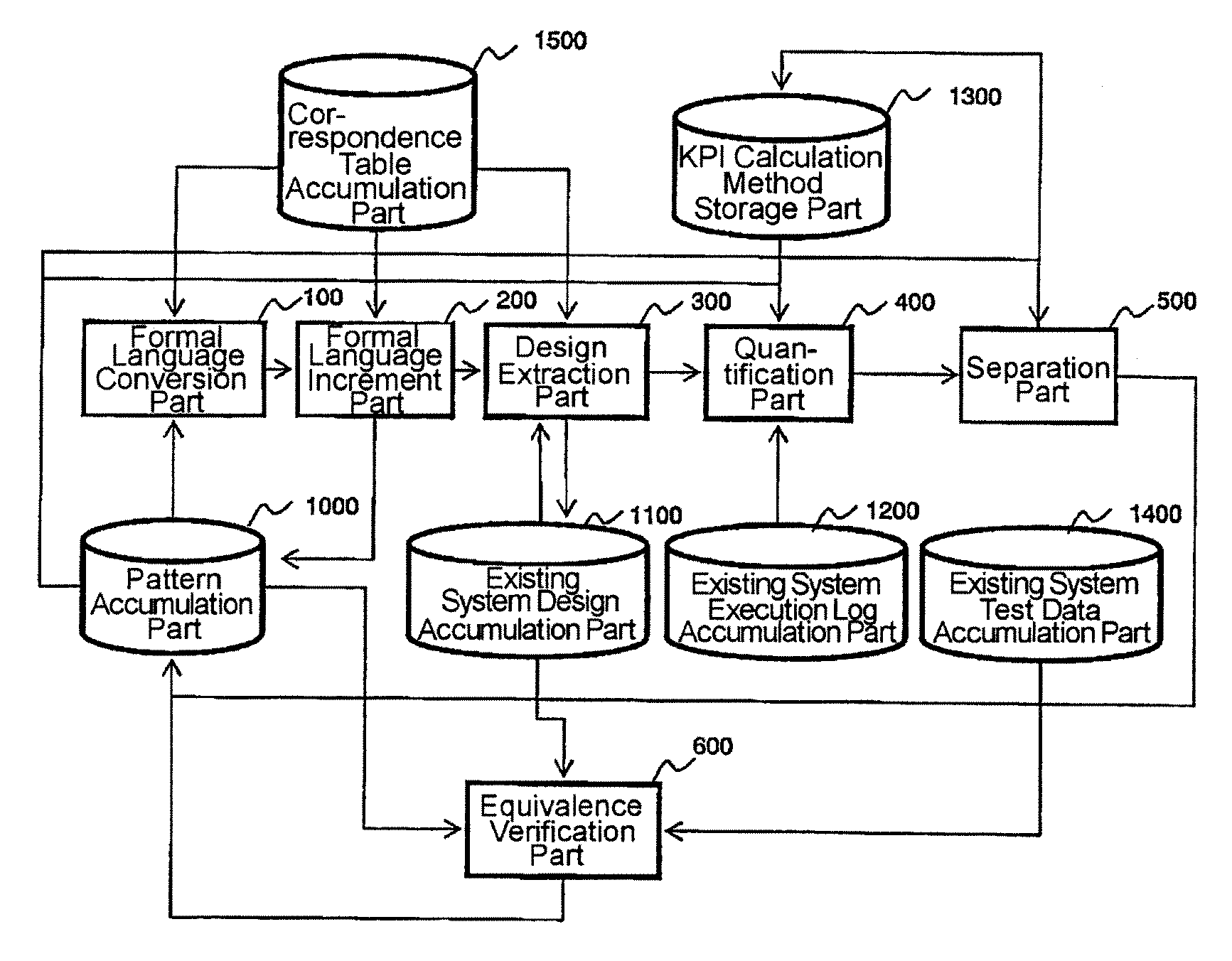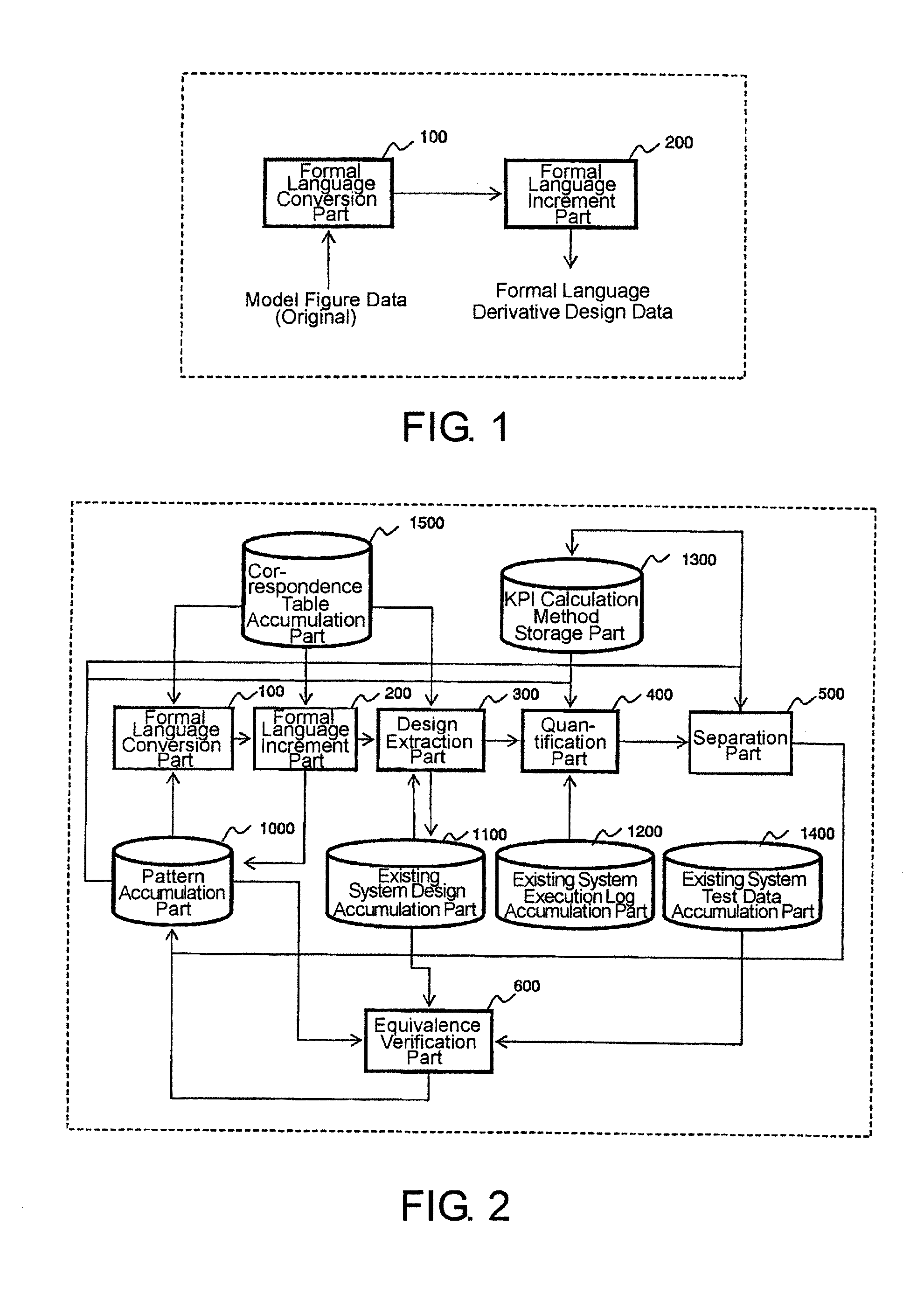Model verification system, model verification method, and recording medium
a verification system and model technology, applied in the field of model verification systems and model verification methods, can solve problems such as inability to quantitatively determine the effects of a program change, system does not actually carry out refactoring, and improper evaluation of modified programs
- Summary
- Abstract
- Description
- Claims
- Application Information
AI Technical Summary
Benefits of technology
Problems solved by technology
Method used
Image
Examples
example 1
[0169]Next, an operation of the first embodiment will be described along with specific examples.
[0170]Description is made about an operation of the first embodiment which may be called
[0171]Example 1 and in which the model figure is a sequence diagram of UML, the formal language expression is an XML schema, and the information description expression is XML.
[0172]FIG. 25 is an explanatory diagram schematically showing increment and quantification of a schema in Example 1. In the example of FIG. 25, it is assumed that parameters are extracted such that the service components are A, B, and C, and that B, C, and A are sequentially called in the calling order. Furthermore, it is assumed that a period of time for a consecutive process starting at B and ending at A is 50 ms.
[0173]The model verification system converts a sequence diagram, which is given as an input, into a formal language expression in the XML schema format according to the correspondence table. The XML schema indicating th...
example 2
[0209]A second example of the present invention in which model figures are expressed in the BPEL language will be described along with specific values with reference to FIGS. 29 and 30.
[0210]First, the data type determination part 110 collates an extension “.seq” of a file with the correspondence table of FIG. 23 (Step S101) to determine whether or not the file can be managed.
[0211]If the file is manageable, the data parameter extraction part 2120 extracts parameters of the service components, the interfaces, and the calling order from a sequence diagram (Step S103).
[0212]In the example of FIG. 29, there are extracted parameters of the service components A, B, and C, the interfaces op1, op2, and op3, and the calling order in which a call from A to B and a call from A to C are made in parallel.
[0213]When those parameters are provided to the information expression generation part 2330 (see FIG. 28), an information expression in the BPEL format is acquired. The acquired information exp...
example 3
[0215]A third example of the present invention in which an XPath form is used in the formal language expression will be described along with specific values.
[0216]FIG. 31 is an explanatory diagram schematically showing increment of an XPath form in Example 3. In the example of FIG. 31, it is assumed that parameters are extracted such that the service components are A, B, and C, and that B, C, and A are sequentially called in the calling order.
[0217]The model verification system converts a sequence diagram, which is an input, into a formal language expression in the XPath format according to the correspondence table (see FIG. 33). The XPath form indicating the order of B, C, and A is as follows. FIG. 31 only illustrates a primary portion.
/ descendant::B / following-sibling::C / following-sibling::A
[0218]Then a formal language increment is performed with respect to this standard XPath form so as to generate a derivative XPath form as formal language expression data of a derivative design.
[...
PUM
 Login to View More
Login to View More Abstract
Description
Claims
Application Information
 Login to View More
Login to View More - R&D
- Intellectual Property
- Life Sciences
- Materials
- Tech Scout
- Unparalleled Data Quality
- Higher Quality Content
- 60% Fewer Hallucinations
Browse by: Latest US Patents, China's latest patents, Technical Efficacy Thesaurus, Application Domain, Technology Topic, Popular Technical Reports.
© 2025 PatSnap. All rights reserved.Legal|Privacy policy|Modern Slavery Act Transparency Statement|Sitemap|About US| Contact US: help@patsnap.com



